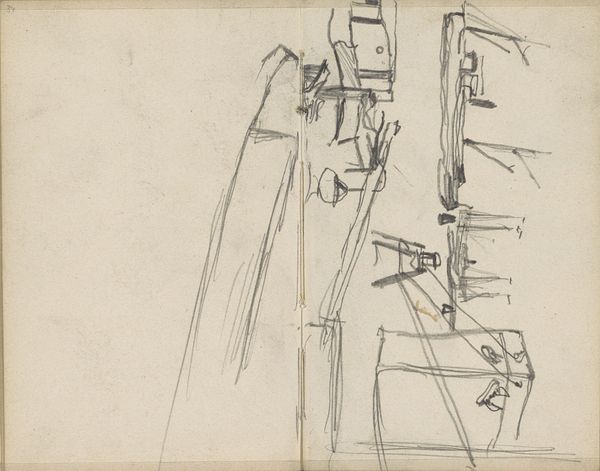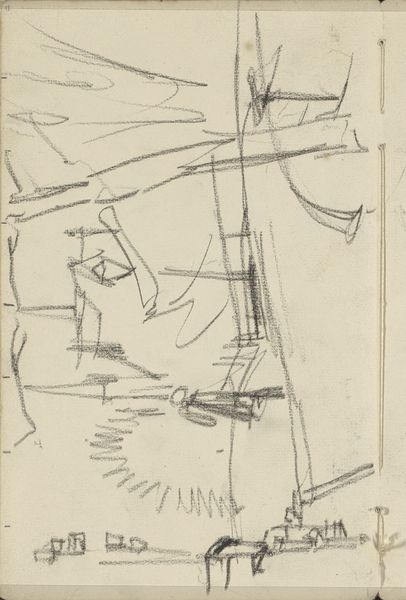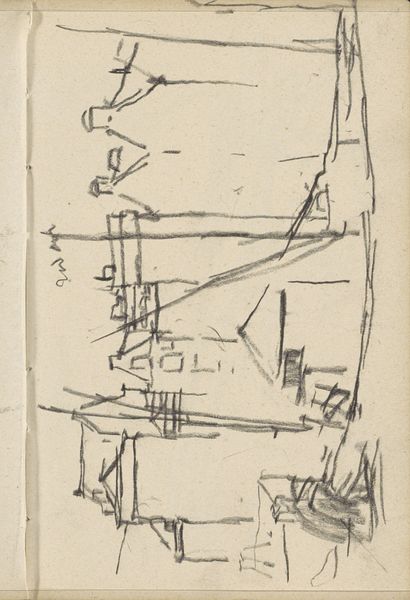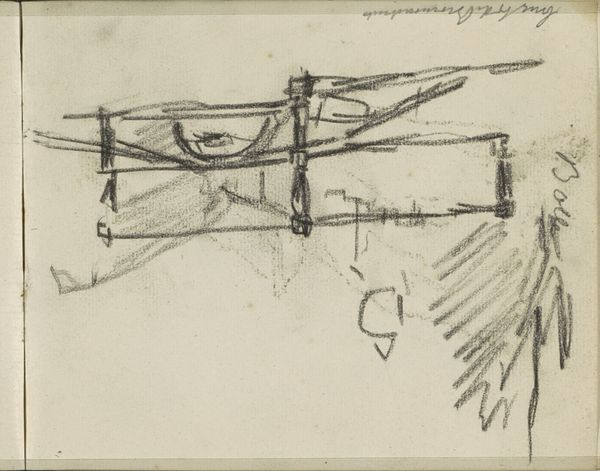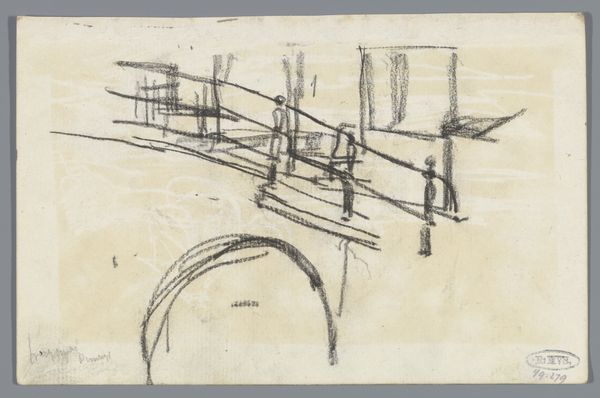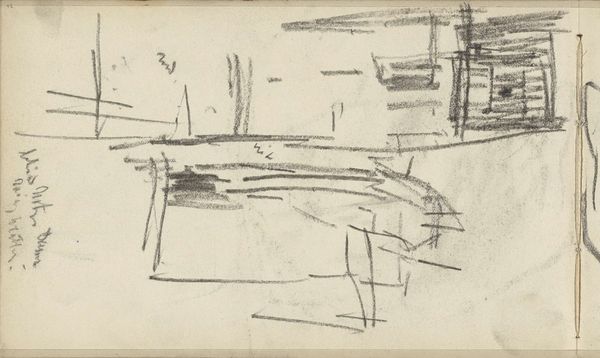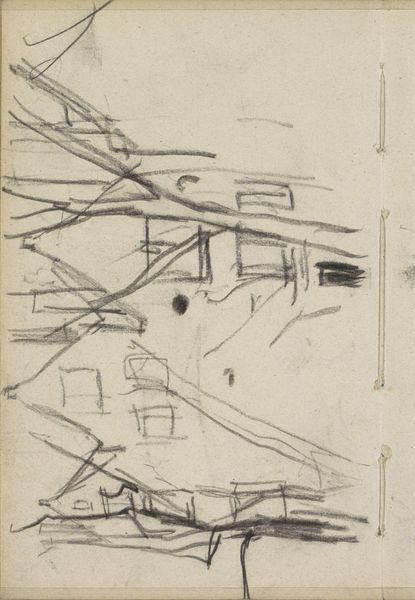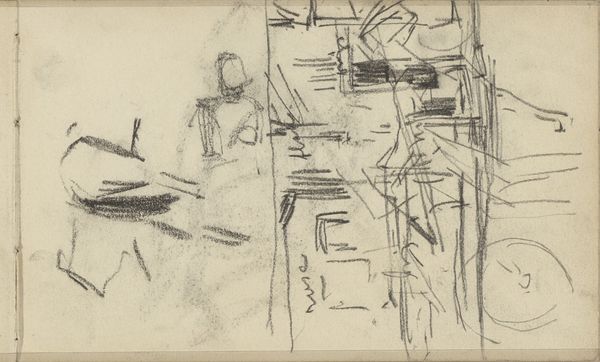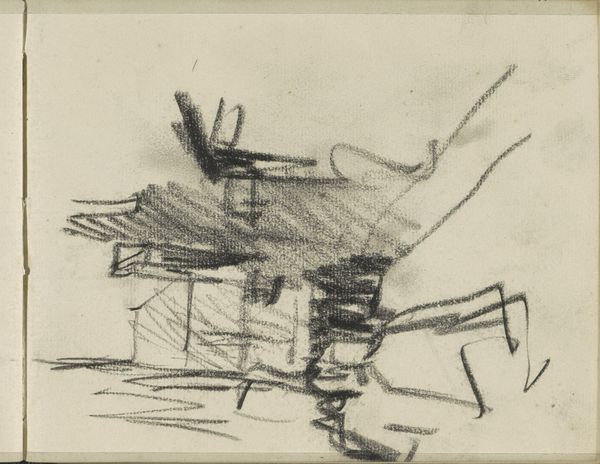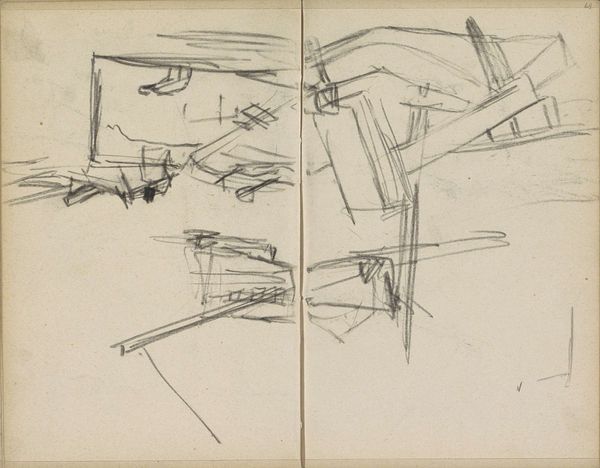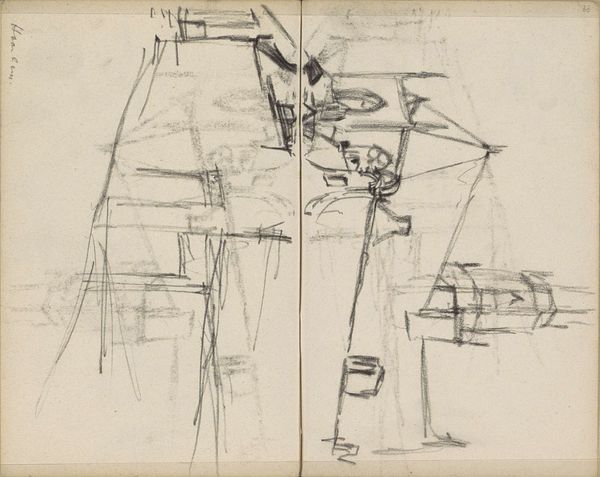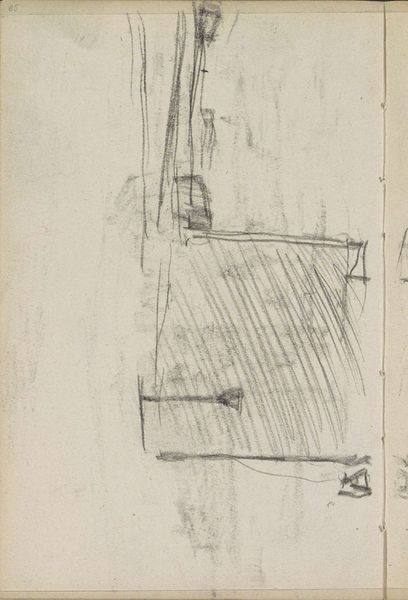
drawing, graphite
#
drawing
#
landscape
#
graphite
#
realism
Copyright: Rijks Museum: Open Domain
Editor: Here we have George Hendrik Breitner's "Ships on a Quay," created around 1886 to 1891. It's a graphite drawing on paper, and the stark lines create such a feeling of industrial activity. What catches your eye, and how do you interpret its visual elements? Curator: What I appreciate is the economy of means. The graphite strokes, seemingly dashed off, effectively delineate space and form. The composition hinges on the interplay of verticals—the masts, perhaps?—bisecting the horizontal expanse of the quay. Consider how the diagonal lines, likely rigging, generate dynamic tension against this grid. The image operates semiotically; what appears haphazard initially reveals structural integrity upon closer examination. Do you see how Breitner establishes a clear foreground, middle ground, and background despite the simplicity of the medium? Editor: Yes, I see that now. Initially, it felt very flat, but the weight of the lines definitely implies depth. It's amazing how much information is conveyed with so few marks. Is there something about the texture or handling of the graphite that informs your reading? Curator: Precisely! The roughness, the uneven application of graphite, enhances the realism. The artist isn't striving for photographic accuracy, but rather a subjective, felt experience of this industrial space. Notice how areas are more densely shaded, creating pockets of dark that offset the lightness of the paper. The material properties of the graphite and paper themselves contribute meaning. It isn't simply a representation of ships; it's an exploration of tonal values, lines, and textures to create the sensation of ships at the docks. Editor: That is fascinating! I was so focused on the "what" that I nearly missed the "how" and the "why." Now, I see the drawing as not just a picture, but as a study in form and space. Curator: And how effectively it achieves that, wouldn't you say? By studying its visual framework, we transcend a merely descriptive viewing experience. The aesthetic language unveils its purpose.
Comments
No comments
Be the first to comment and join the conversation on the ultimate creative platform.
